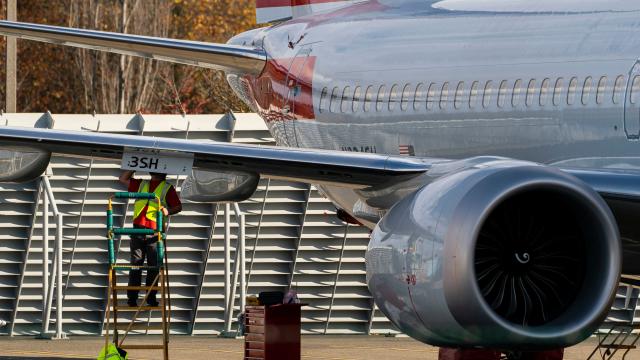Over a year and a half ago the FAA grounded the Boeing 737 Max after two crashes that left 346 people dead. The failures on the 737 Max were later attributed to a “culture of concealment.” Today, the FAA lifted the grounding order on the 737 Max.
Here is FAA Administrator Steve Dickson explaining the move:
Dickson — formerly a Delta pilot — says he took additional Max training himself in September, flying a 737 Max for two hours to evaluate things.
“I am 100 per cent comfortable with my family flying on it,” Dickson says in the video, which is an effort to sound reassuring but in this case kind of has the opposite effect.
In any case, Dickson also says that the ungrounding order does not mean 737 Maxes will immediately go back to the air. The FAA still has to approve a training program for 737 Max pilots, and airlines will also have to do required maintenance on parked 737 Max planes before they can go back up in the air.
Dickson also said that the 737 Max will also still have routine issues that happen to all planes, drawing a distinction between those routine issues and what happened that led to the 737 Max’s grounding.
“It’s inevitable that at some time in the future, a Boeing 737 Max will turn back to its originating airport, divert or land at its destination with an actual or suspected in-flight problem,” Dickson says. “While these events can be inconvenient and unsettling to passengers, they occur virtually every day in our national airspace system.”
The problem with the 737 Max, at its core, is that it is a bit of a frankenstein of a plane, introduced nearly 50 years after the first 737 and capable of doing things the original 737s were never designed to do.
Here’s The New York Times on what specifically went wrong. There were technological failures, regulatory failures and internal issues at Boeing:
For decades, Boeing had taken an incremental approach to the 737, choosing to update the plane rather than conceive a new model. That strategy had benefits, including reducing the need for costly pilot retraining. But it also resulted in a patchwork design that sometimes required workarounds. When larger, more efficient engines were added to the plane, they caused the Max to tilt up during certain manoeuvres. MCAS — for manoeuvring characteristics augmentation system — was programmed to counter that.
In both crashes, faulty sensors activated the software, sending the planes toward the ground as the pilots struggled to pull them back up. In a September report, Democrats on the House Transportation and Infrastructure Committee said internal Boeing documents showed that concerns raised by employees about MCAS had been dismissed or insufficiently addressed. That report and one from the Transportation Department’s inspector general accused Boeing of misleading the F.A.A. by playing down the complexity of MCAS, perhaps to avoid costly pilot training.
The House committee also faulted the agency’s practice of outsourcing some certification functions to employees of the companies it oversees.
According to the NYT, it’s likely that 737 Max planes won’t be in the air again until early next year, given the steps airlines must undertake. Here’s a useful guide to checking what model aeroplane you are flying on.
